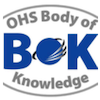Chapter 19: Psychosocial Hazards
Abstract
Exposure to work-related psychosocial hazards is escalating in today’s 24-hour society which is increasingly dominated by knowledge work and digital economies. This chapter – the first of three chapters focused on psychosocial hazards – introduces the topic and provides an overview of key concepts related to psychosocial hazards. It presents a framework of ten psychosocial hazards that increase the risk of injury/illness: time pressure/role overload; emotional demands; poorly defined work roles; interpersonal or team conflict; poorly managed change; lack of job control; lack of supervisor and/or co-worker support; organisational injustice; inadequate reward and recognition, and certain environmental conditions. The risk-assessment process for psychosocial hazards is outlined and implications for Occupational Health and Safety (OHS) practice are discussed
Keywords: Psychosocial hazards, occupational stress, psychological injury, mental health, work
stressors
First year of publication: 2012
Current Version: 2020
Chapter 19: Psychosocial Hazards
Table of contents
| 1 | Introduction |
| 1.1 | Definitions |
| 1.2 | A note on terminology |
| 2 | Historical Context |
| 3 | Extent of the problem |
| 3.1 | Psychosocial hazards and individual health and safety outcomes |
| 3.2 | Psychosocial hazards and organisational outcomes |
| 4 | Common work-related psychosocial hazards |
| 4.1 | An illustrative framework |
| 4.2 | Psychosocial hazards explained |
| 4.3 | Individual differences |
| 5 | How psychosocial hazards create harm |
| 5.1 | The stress response |
| 5.2 | The causal flow from psychosocial hazards to health and safety outcomes |
| 5.3 | Impact of organisational systems |
| 6 | Risk management for psychosocial hazards |
| 6.1 | Organisational and management commitment |
| 6.2 | Organisational communication |
| 6.3 | Worker participation |
| 7 | Risk assessment for psychosocial hazards |
| 8 | Risk control |
| 8.1 | Interventions |
| 8.2 | Realistic timeframes |
| 9 | Implications for OHS practice |
| 9.1 | Risk management approach |
| 9.2 | Focus on design of work |
| 9.3 | Interactions between psychosocial hazards and HR practices, IR matters and line manager skills |
| 9.4 | Return-to-work |
| 9.5 | The changing nature of work |
| 9.6 | Workers with mental illness |
| 10 | Summary |
| Resources | |
| References |
Purchase the AUDIO chapter here through AIHS
OR

Kïrsten A Way PhD, BA (Psych Hons), BOccThy, GCHEd, MAIHS, MAPS, CPE, FCOP
School of Psychology, University of Queensland.
Kirstenis a Senior Lecturer and Program Director at the Centre for Business and Organisational Psychology at UQ where she conducts research on safety, the role of supervisors in conflict, psychosocial hazards, occupational stress, fatigue, injury management, and occupational health and wellbeing. Dr. Way is an Organisational Psychologist, Occupational Therapist and Certified Professional Ergonomist. She specialises in the study of worker and group-level psychology and its influence on various aspects of organisational performance, but in particular, work health and safety (WHS) and injury management. She has expertise in work design and occupational health including workplace bullying, work-related mental health, workplace stress, work-related fatigue, human factors and ergonomics, and MSDs. She has significant industry expertise having worked as the Director of a private consultancy specialising in WHS and organisational psychology and having held positions for Australian and UK WHS regulatory authorities, including Principal Inspector (Ergonomics), Manager Psychosocial Strategy Unit, and Manager WHS Policy Branch. She has provided expertise to the Australian and UK Governments to assist in the development of both the NSW Mentally Healthy Workplaces Benchmarking Tool and The NSW Mentally Healthy Workplaces Strategy 2018-2022 and has contributed to writing both The Workplace Harassment Code of Practice (Qld) and The National Guidance on Work-Related Psychological Health and Safety.
Peer reviewer
Dr Carlo Caponecchia, Senior Lecturer, School of Aviation, University of New South
Wales.
Learning Outcomes: Psychosocial Hazards and Occupational Stress
The OHS Body of Knowledge takes a conceptual approach which enables it to be applied in different contexts and frameworks.
To optimise its value for education and professional development learning outcomes have been developed for each technical chapter in the Body of Knowledge.
The learning outcomes as described give an indication of what should be the capabilities of an OHS professional; it is up to those developing OHS education programs, OHS professionals planning their CPD or recruiters or employers selecting or developing people for the OHS function to consider the required breadth vs. depth .
Please read the section on using the learning outcomes before delving into the leaning outcomes of the individual chapters.
The numbers against each learning outcome refer to the chapter number of the BOK download page. No learning outcomes have been developed for the chapters considered introductory or underpinning knowledge (that is chapters 1, 2, 3, 4, 5, 6, 7, 1, .13, 14, 15.)
Websites
People at Work Collaboration Website: People at Work (PAW)
People at Work is Australia’s only validated and evidence based psychosocial risk assessment survey tool with benchmarking that measures psychosocial hazards and factors. People at Work can help businesses comply with their OHS duties by better management of work-related psychosocial hazards. Organisations that undertake People at Work have access to: the People at Work survey, a psychosocial risk assessment tool that is now available digitally to Australian organisations at no cost and all materials required to administer and report on the People at Work survey, including access to automated and customised reports, interactive learning modules and resources to assist in implementing a psychosocial risk management approach and evaluating the effectiveness of chosen interventions.
Date: Ongoing
Presenters: Collaboration (Australian OHS Regulators)
Source: https://www.peopleatwork.gov.au/
Webinars
AIHS Webinar: The perfect psychological safety storm
According to a Harvard Business School Professor, Amy Edmondson, psychological safety is a belief that one will not be punished or humiliated for speaking up with ideas, questions, concerns, or mistakes. Fostering psychological safety has been proven to result in positive organisational outcomes but what needs to be in place from an individual, team, leader and work design perspective? This webinar presents some research that shows what creates the perfect psychological safety storm.
Date: 2021
Presenters: Alastair Milne
Source: https://youtu.be/4USFTwkHdXw
AIHS Webinar: An integrated approach to wellness: Creating systematic cultural change
An Integrated Approach to Wellness is a program developed to change workplace cultures and practices to support mental health in the construction industry. Partnering with key decision makers, issues are addressed from the top, resulting in long-term systemic change. The program focuses on prevention and is being continually reviewed, tested, measured and refined to develop a robust, evidence-based framework to provide a standardised approach for building a culture of positive wellbeing in organisations. The presentation outlines a roadmap of activities required at all levels of an organisation to achieve this change, which includes initiatives such as building leadership capability; equipping safety champions to have valuable conversations that promote care and connection and working with employees to self-manage health and wellbeing.
Date: 2021
Presenters: Janet McCulloch
Source: https://youtu.be/LE5htTutUr8

